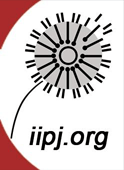Gender Gaps in Indigenous Socioeconomic Outcomes: Australian Regional Comparisons and International Possibilities
Abstract
International literature clearly demonstrates the potential for gender-based inequalities to constrain development processes. In the United Nations Development Programme Gender-related Development Index, Australia ranks in the top five across 177 countries, suggesting that the loss of human development due to gender inequality is minor. However, such analysis has not been systematically applied to the Indigenous Australian population, at least in a quantitative sense. Using the 2006 Australian Census, this paper provides an analysis across three dimensions of socioeconomic disparity: Indigeneity, gender, and geography. This paper also explores the development of a similar gender-related index as a tool to enable a relative ranking of the performance of Indigenous males and females at the regional level across a set of socioeconomic outcomes. The initial findings suggest that although there is a substantial development gap between Indigenous and non-Indigenous Australians, the development loss from gender-related inequality for Indigenous Australians is relatively small. Higher life expectancy and education attainment for Indigenous females balances out their slightly lower earnings to a large extent. At the regional level, Indigenous females tend to fare better than Indigenous males for the set of indicators chosen; and, this is particularly true in capital cities.
Acknowledgments
An earlier version of this paper was presented at the Aboriginal Policy Research Conference in Ottawa. We thank participants at the conference for their useful feedback and the conference organisers for the opportunity to present our work. The authors are especially indebted to Anne Daly, Janet Hunt, Boyd Hunter, and John Taylor for helpful insights and comments on an earlier draft. A number of organisations and individuals provided helpful feedback on an early draft of this work including officers of the Standing Committee for Aboriginal and Torres Strait Islander Affairs (SCATSIA) and the Productivity Commission. The authors are especially grateful to Gillian Cosgrove for her detailed proofing and layout. Last but not least, the authors would like to thank the two IIPJ referees for their time in providing constructive feedback.
Creative Commons License

This work is licensed under a Creative Commons Attribution-Noncommercial-No Derivative Works 4.0 License.
Recommended Citation
Yap, M.
,
Biddle, N.
(2010).
Gender Gaps in Indigenous Socioeconomic Outcomes: Australian Regional Comparisons and International Possibilities. The International Indigenous Policy Journal, 1(2)
. Retrieved from: https://ir.lib.uwo.ca/iipj/vol1/iss2/3
DOI: 10.18584/iipj.2010.1.2.3

- Citations
- Citation Indexes: 8
- Policy Citations: 4
- Usage
- Downloads: 915
- Abstract Views: 429
- Captures
- Readers: 23
